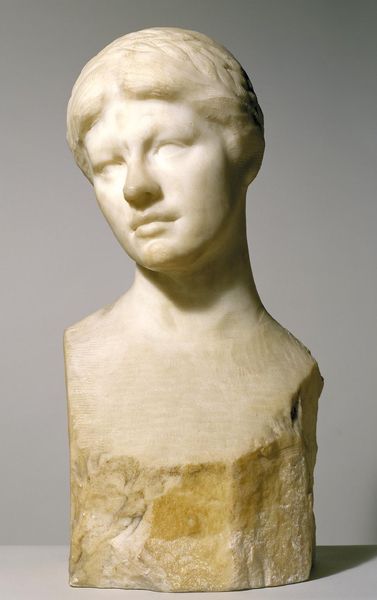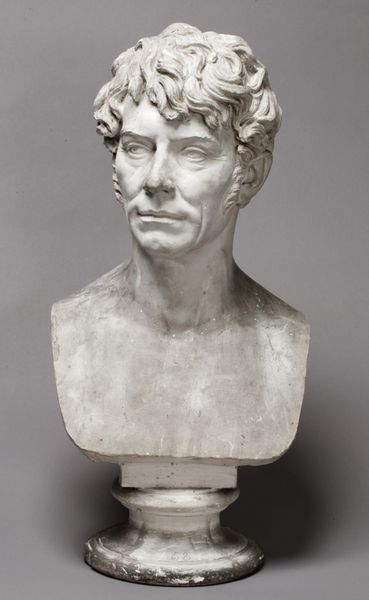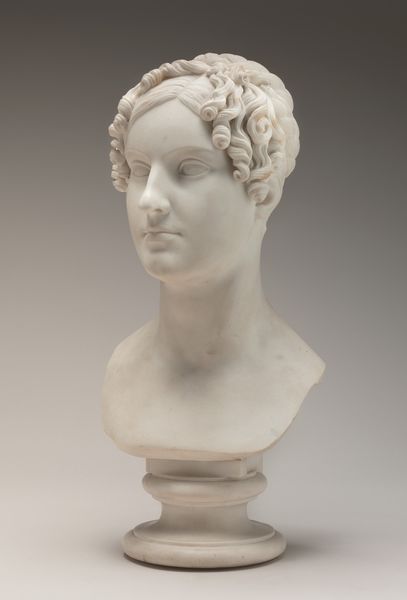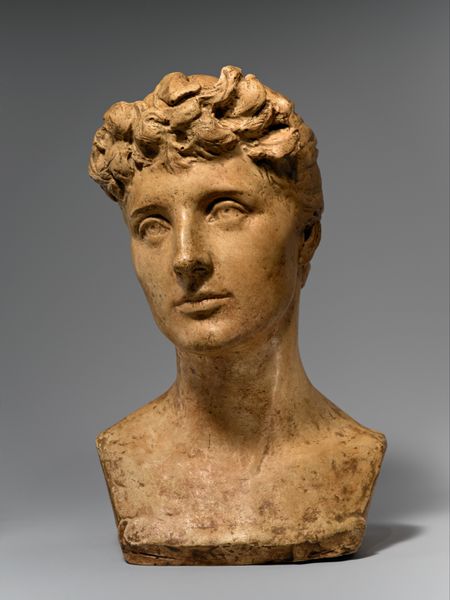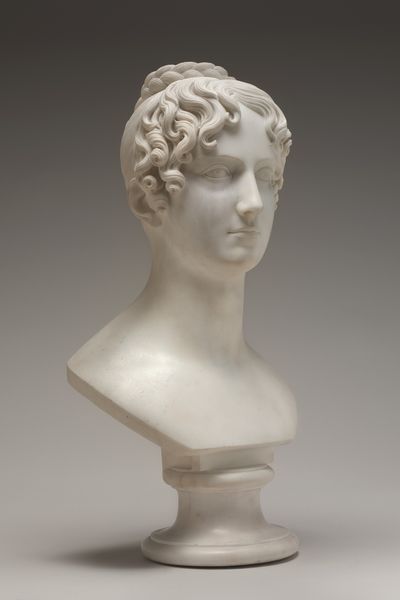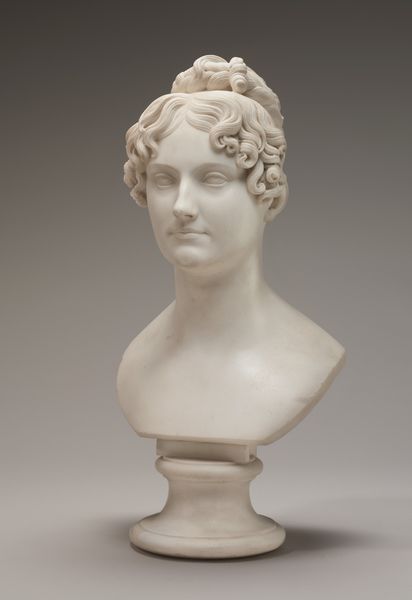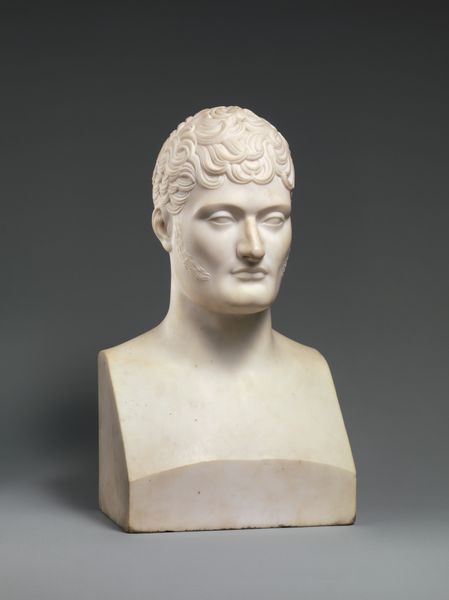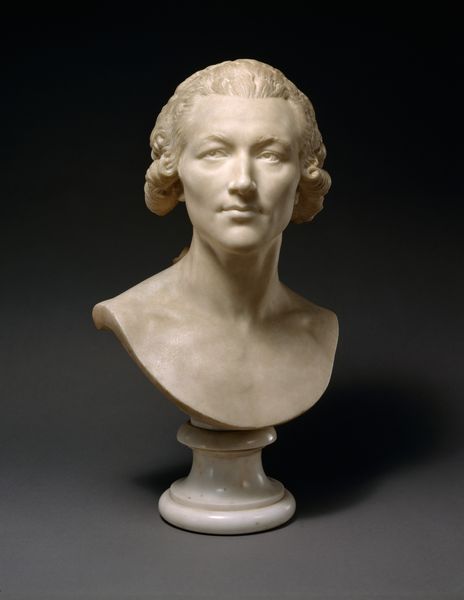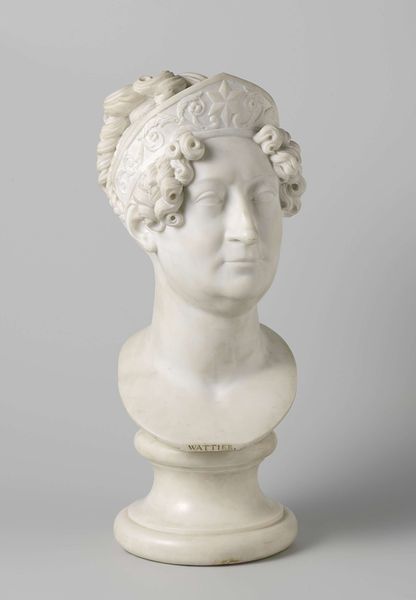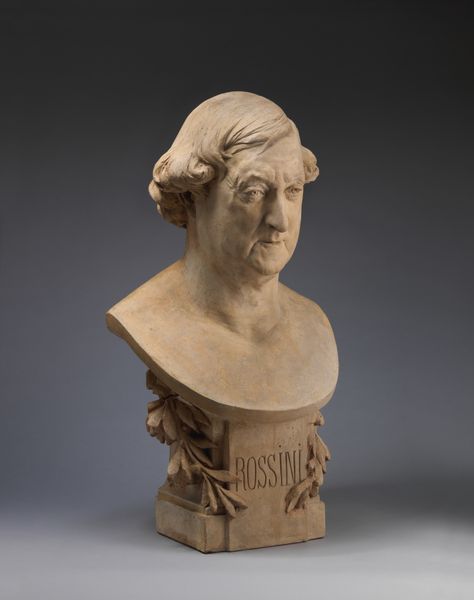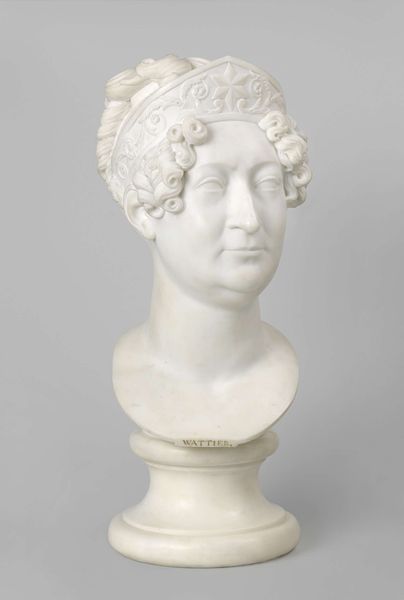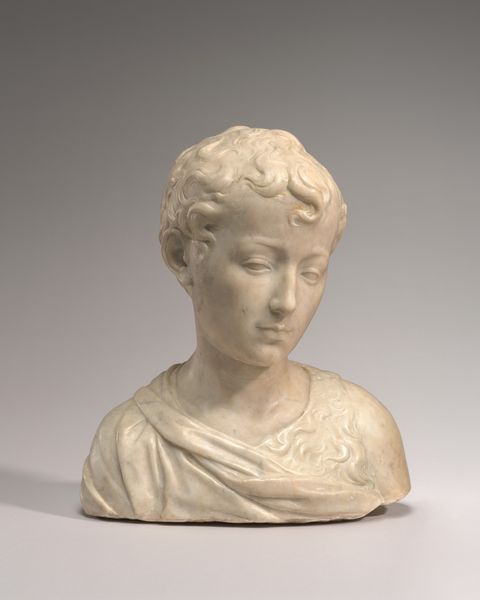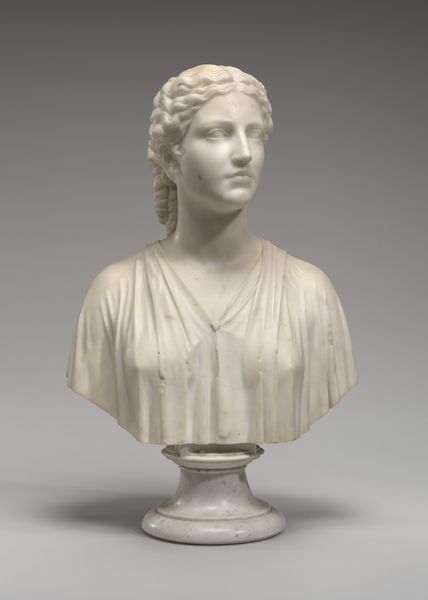
bronze, sculpture
#
portrait
#
sculpture
#
bronze
#
figuration
#
sculpture
#
modernism
#
realism
Dimensions: overall: 38.2 x 24.2 x 28.1 cm (15 1/16 x 9 1/2 x 11 1/16 in.)
Copyright: National Gallery of Art: CC0 1.0
Curator: Here we have Charles Despiau's bronze sculpture, "Agnes E. Meyer," created in 1929. Editor: There's a gentle strength in this work; the simplified forms and the soft patina suggest a thoughtful interiority. It’s neither heroic nor idealized but feels deeply personal. Curator: The formal aspects certainly bear that out. The restrained modeling, particularly in the planes of her face, evokes a classical simplicity. And her gaze—direct, but not confrontational—invites contemplation. Editor: But look closer – the materiality speaks volumes too. Bronze is not neutral. Despiau made it in a moment where new modes of mechanical reproduction were on the rise. The bronze is a nod to older practices when individual craftsmanship defined quality and time, even while modern industry accelerated every production cycle. I can't help but wonder who actually held the tools for casting this. Curator: An interesting point. The very act of casting and the artist’s hand—evident in the slight surface variations—suggest a connection between the artist and subject, a dialogue expressed in form. Think about the smooth curves contrasting the deliberate marks. Editor: Yes, that contrast underscores the labor involved. Who were the unseen laborers in the foundry, manipulating molten metal to bring this portrait to life? It prompts a conversation about labor, value, and artistry that frequently overlooks social stratification in modern society. What does it really cost to give form to art? Curator: A potent consideration of value. Viewing the work in a purely formal context though, one recognizes a simplification of the naturalistic mode prevalent during that time. It shares a formal language with works by Brancusi and Modigliani but stays anchored in a realism, making it subtly compelling. Editor: I can appreciate that reading. But considering this in context, it’s not just a simplified portrait, but a testament to shifting industrial and social realities—made possible and inflected by technological transformation. I like her quiet resilience, both of medium and persona. Curator: A reminder of the dialogue between artist, material, and era—indeed quite enriching. Editor: It gives an added dimension to ponder about making.
Comments
No comments
Be the first to comment and join the conversation on the ultimate creative platform.
